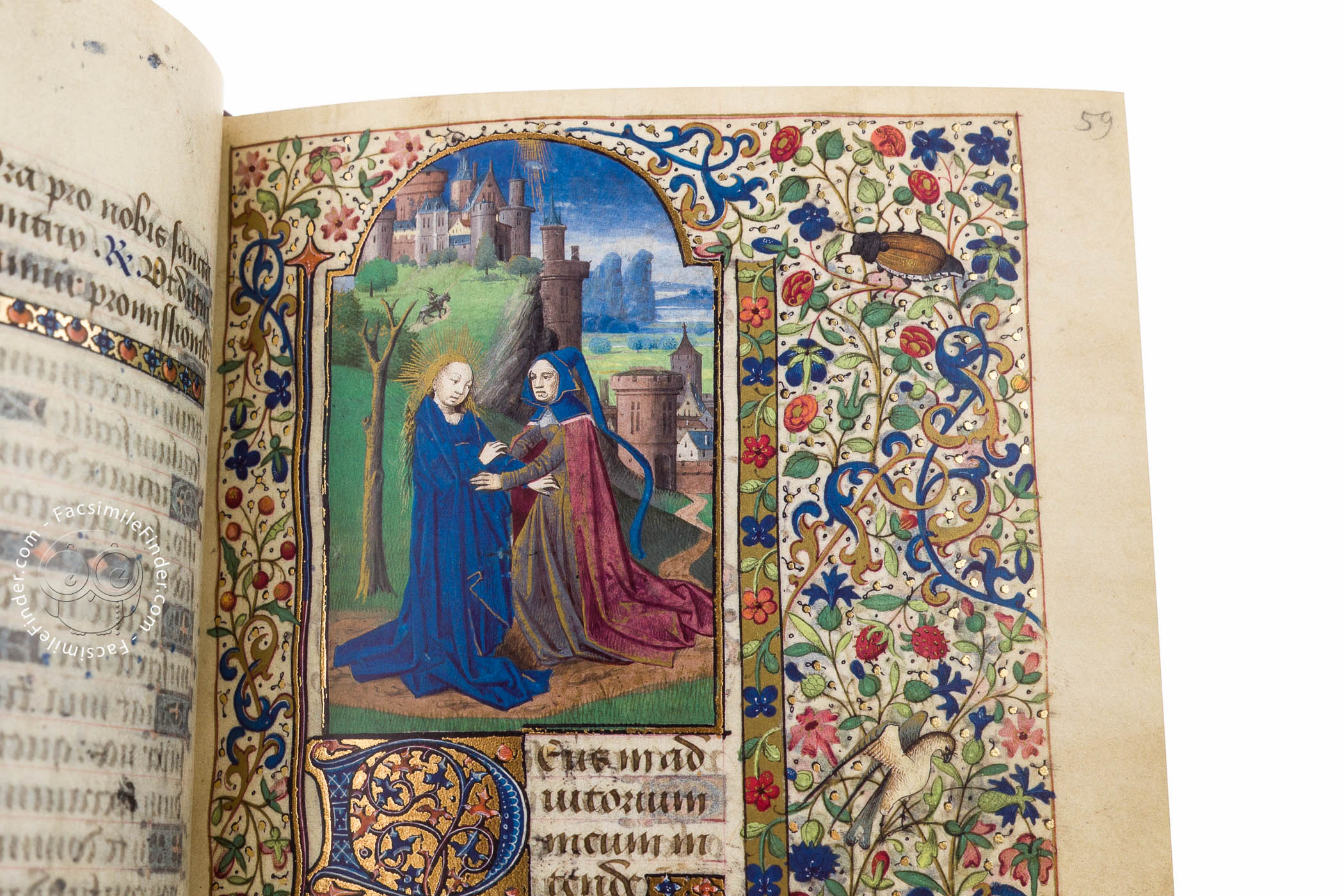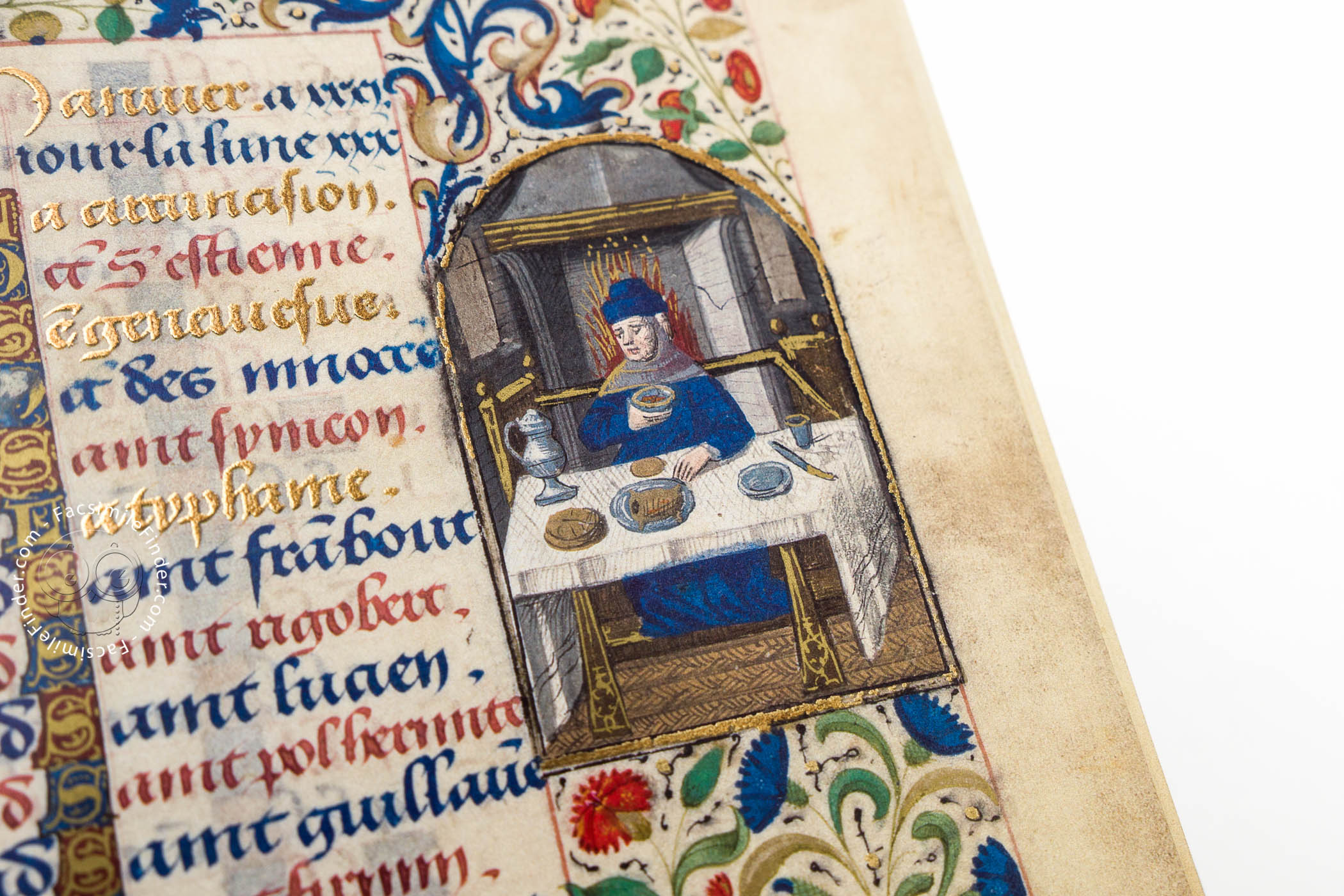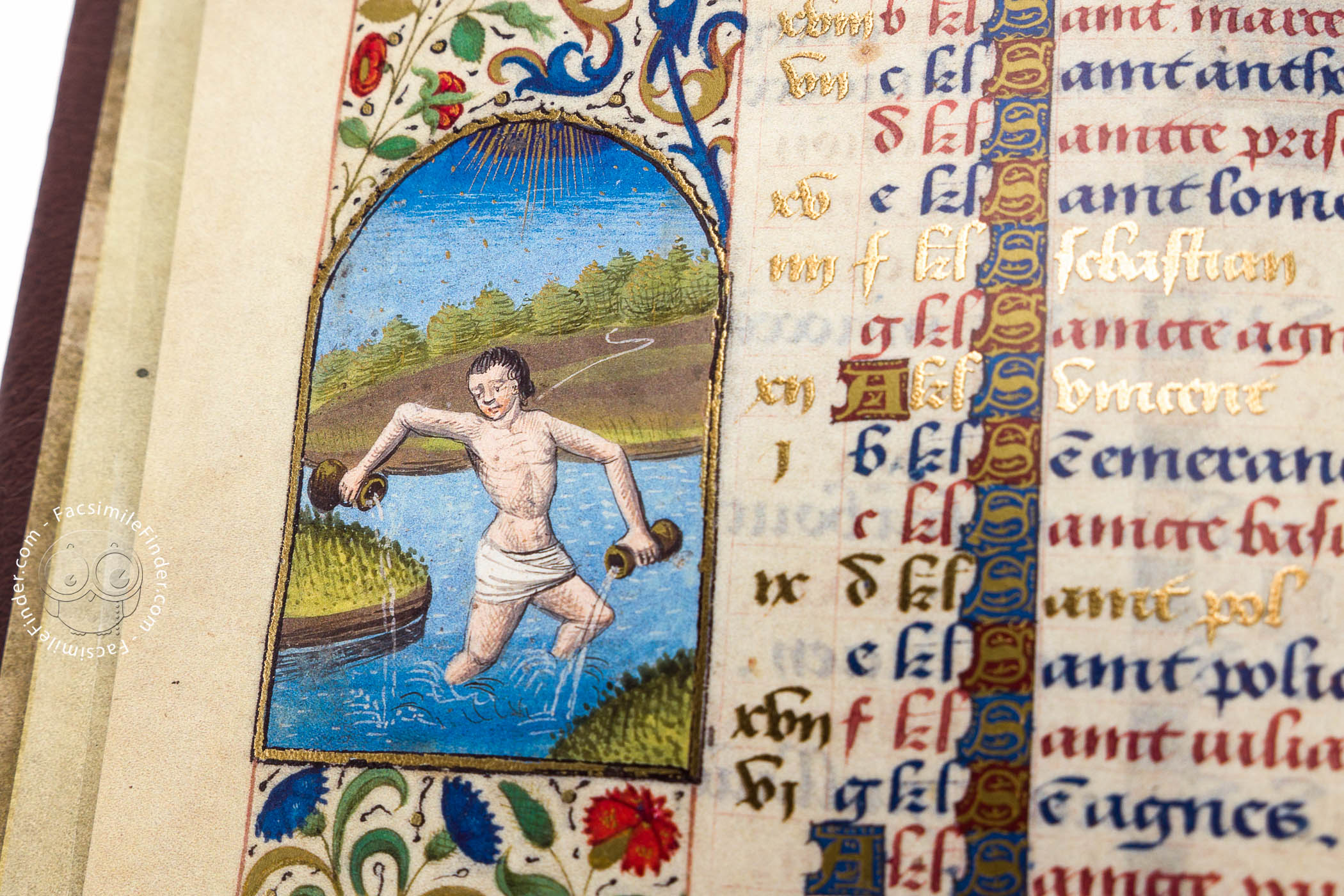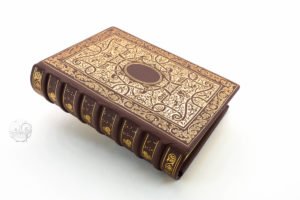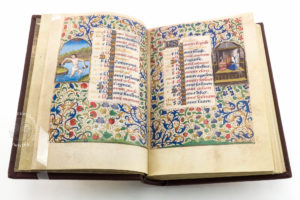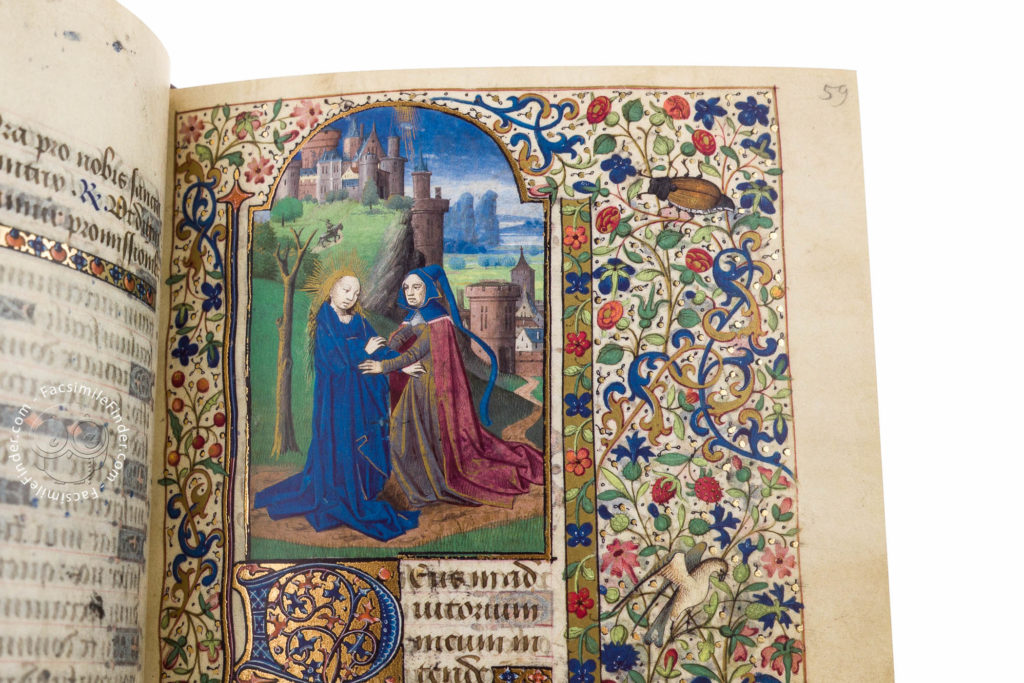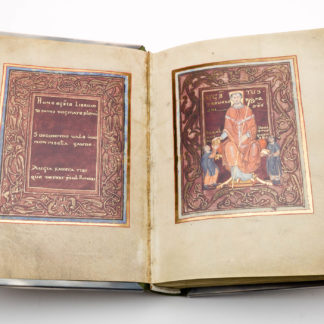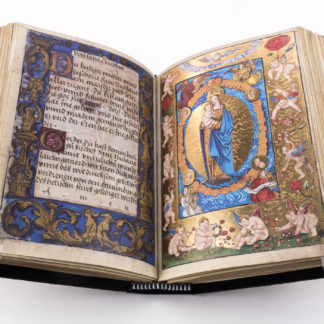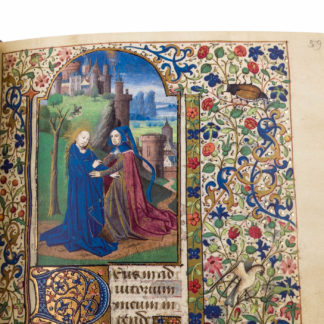Description
Facsimile limited edition of the Moskauer Stundenbuch by Wissen Media Verlag (2007) featuring:
- Edition details: Moskauer Stundenbuch – Gütersloh/Munich: Wissen Media Verlag GmbH, 2007
- Commentary: German by Zolotova Ekaterina and Hack-Molitor Gisela
- Binding: brown leather decorated with gold tooling. The spine presents 7 leather bands
- Case: acrylic
About the original manuscript: Russian State Library, Bezeichnung Fond 183, Nr. 446
Among the several dozen French books of hours kept in the Moscow collections the Moskauer Stundenbuch is one of the most magnificent. It was decorated in the 1470s in Paris and judging by the coat of arms, his client was a personality of high rank. On one of the leaves of the Book of Hours is a praying patron on a kneeling stool, leaning on it is his crest (fol. 221, “Christ and the Apostles appear to the patron”); symbols of wealth and nobility are a recurring theme in the miniatures.
Unfortunately both crest and motto are scraped off – it happened often that the subsequent owner of a manuscript wanted to erase all memories of its predecessor. Hence, the name of the patron of the Moscow Book of Hours is not yet determined.
The Tormented Past of the Moskauer Stundenbuch Shimmering Miniatures
Each part of the Moscow Book of Hours contains a large miniature cycle, for a total of seventeen. Unfortunately, twelve miniatures have gone missing – including the “Adoration of the Magi” and the “Flight into Egypt” from the Office of Mary, almost all of the Passion cycle, the Office of the Dead and some suffrage miniatures.
It is conceivable that Western collectors recklessly removed the relevant pages sometime in the 19th century, a time when collections of medieval art and book miniatures had become fashionable in Western Europe. Fortunately, the manuscript still contains 24 large miniatures, 24 illustrations (calendar) and is provided with 173 pages of exquisitely decorated edge.
At least two painters were involved in the creation of the Moskauer Stundenbuch: landscapes and interior scenes prove that both Masters had been certainly influenced by the Coëtivy Master, one of the leading Parisian book painters of his time known for his close relationship with the art of Dutch painting.
Moving from the Coëtivy Master to the Dutch Influence
The miniature of “Mark the Evangelist” (fol. 24) shows a further re-interpretation of the architectural design that the Masters have taken over from their teacher. Here, the scenes are consciously extended by architectures in which stand a great number of people.
Such complicated architectural forms were very popular, especially with Rogier van der Weyden and the Dutch masters. As for the few landscape scenes of the Moskauer Stundenbuch, there are motifs from the repertoire of the Coëtivy Master, such as the meadows of broad valleys filling the miniatures’ background.
Landscapes and settings show a Dutch influence with its eye to detail and bucolic-like scenes – examples are the “Visitation” (fol. 59), and “Lukas paints the Madonna” (fol. 19v). The Dutch innovation in European painting is present for instance in the miniature “Annunciation” (fol. 37) where the meeting of the Virgin Mary with the heavenly messengers takes place in the home of Mary and Joseph, instead than in church.
Another pictorial influence can be detected in the night scene of “Christ on the Mount of Olives” (fol. 209) where Jerusalem appears similar to a medieval French town according to the Parisian book illumination. The artist disengages from tradition choosing not to represent the cup of suffering next to Jesus, but having it handed to him by an angel, thus following the words of the Evangelist Luke: “Then an angel from heaven appeared and gave him (new) power” (Lk. 22.43).
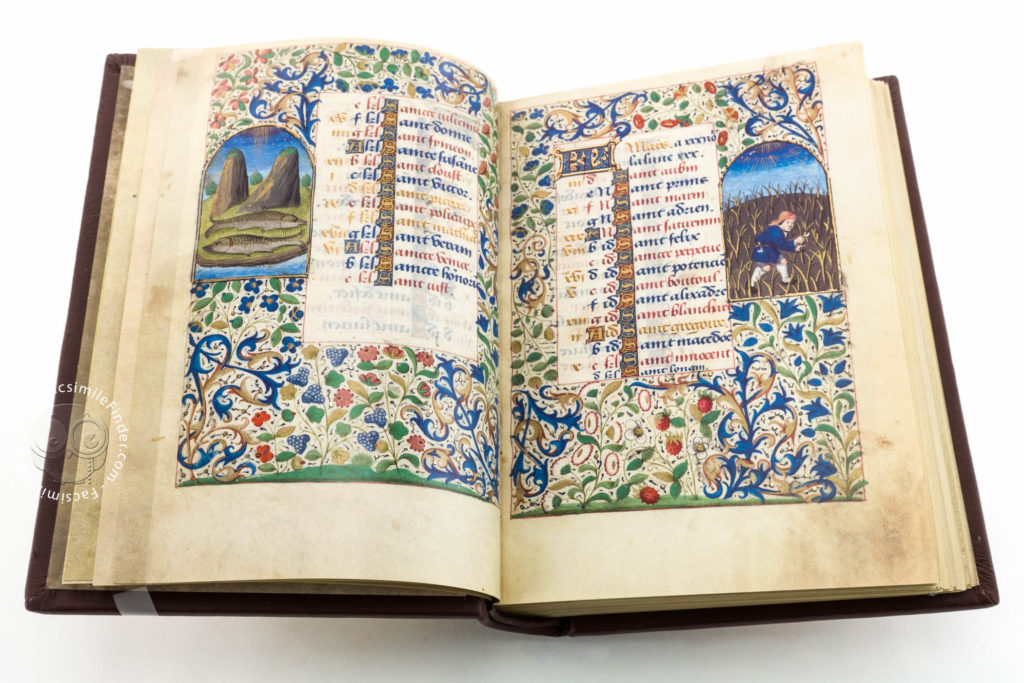
Get in touch with us for further information!
